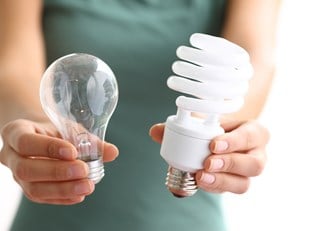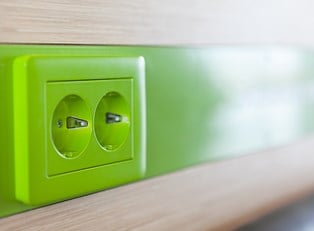When you’re working to make an energy efficient home, you’ll wonder how to make your sink and water use as environmentally friendly as possible. While energy efficient sinks don’t exist (because the sink has nothing to do with water usage), there are energy efficient faucets, and you should definitely buy them.
Where to Start
It’s important to do your research if you are working on making your home energy efficient. If you are keeping your original sink it’s important to find out which faucet is compatible with your sink. Check the measurements of your original faucet to guide you. There are standard faucet sizes for different types of sinks, but sometimes older sinks have irregular sizes. If you have an older home that still has the original fixtures, upgrade to a new faucet to keep your sink from wasting water.
Faucets account for more than 15 percent of indoor household water use. That’s more than 1 trillion gallons of water across the United States each year. Be sure to fix a leaky kitchen faucet immediately; gallons of water can be wasted daily from what appears to be a minor leak. The aerator (the screw-on tip of the faucet) ultimately determines the maximum flow rate of a faucet. If you have an older kitchen faucet, consider replacing the aerator with a more efficient one. Aerators are inexpensive to replace and are an effective water-efficiency measure.
What to Buy
Low-flow fixtures have been on the market for a while. These days, there are also many ultra-low-flow fixtures that conserve even more water without compromising performance. The EPA’s WaterSense program labels ultra-low-flow, highly water-efficient plumbing fixtures that have been independently tested and certified to meet efficiency and performance standards.
To select the most water-efficient plumbing fixtures, you should look for products with certain flow thresholds. When purchasing your product just check to make sure there is a WaterSense label. By installing WaterSense-labeled bathroom sink faucets or faucet accessories, an average household can save more than 500 gallons each year. Also, since these water savings will reduce demands on water heaters, households will also save energy.
Other Ways to Be Energy Efficient
In addition to purchasing a low-flow faucet for the sinks in your house, you can be more mindful of the way you use water. Instead of leaving the water running while you brush your teeth or load the dishwasher, turn it off and on only when you need it. You can also save a lot of water by filling your kitchen sink with warm water to soak dishes rather than letting water run down the drain as you rinse them all out.



